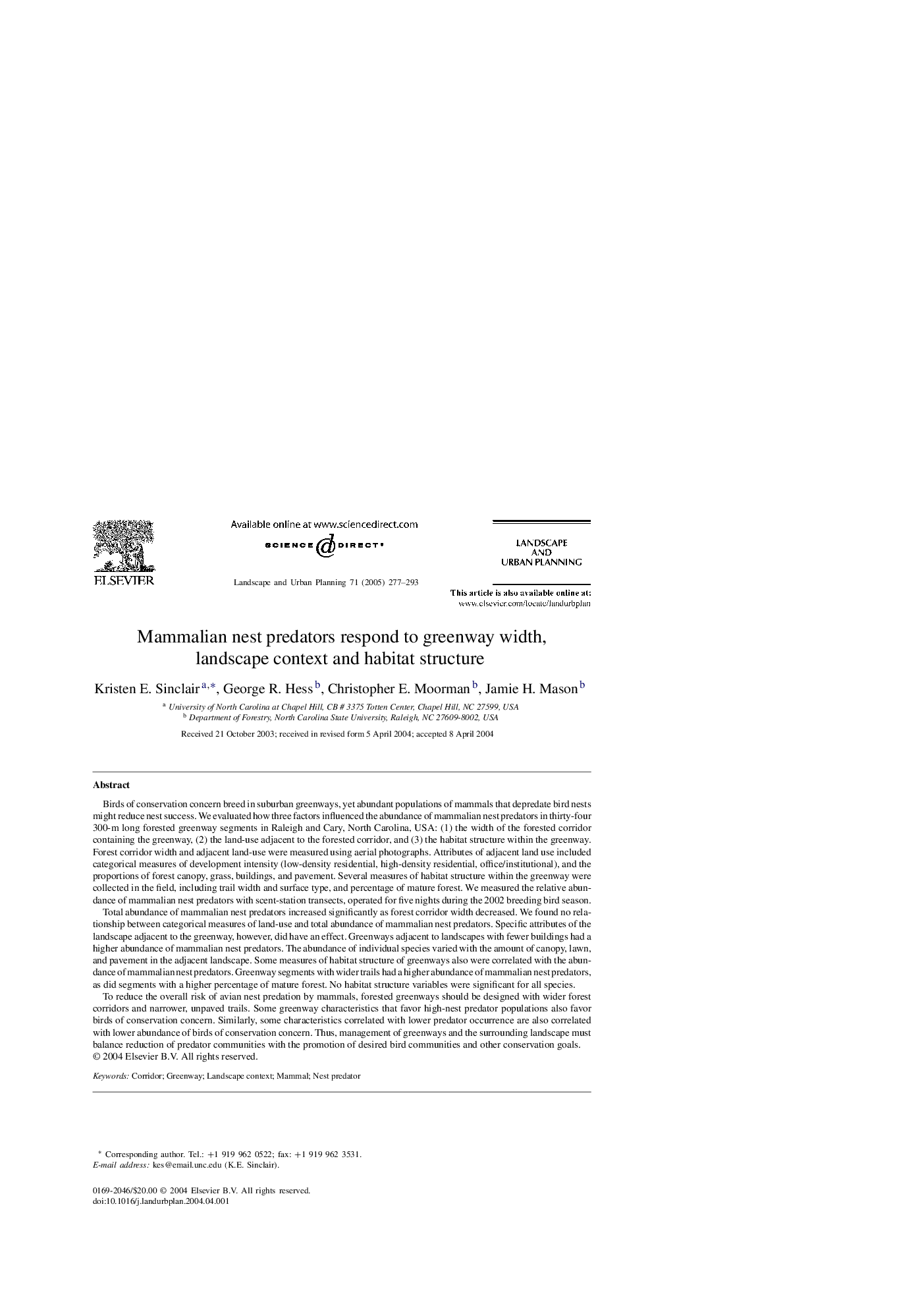| Article ID | Journal | Published Year | Pages | File Type |
|---|---|---|---|---|
| 9736101 | Landscape and Urban Planning | 2005 | 17 Pages |
Abstract
To reduce the overall risk of avian nest predation by mammals, forested greenways should be designed with wider forest corridors and narrower, unpaved trails. Some greenway characteristics that favor high-nest predator populations also favor birds of conservation concern. Similarly, some characteristics correlated with lower predator occurrence are also correlated with lower abundance of birds of conservation concern. Thus, management of greenways and the surrounding landscape must balance reduction of predator communities with the promotion of desired bird communities and other conservation goals.
Related Topics
Life Sciences
Agricultural and Biological Sciences
Ecology, Evolution, Behavior and Systematics
Authors
Kristen E. Sinclair, George R. Hess, Christopher E. Moorman, Jamie H. Mason,
